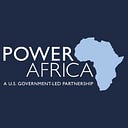Advancing a Connected Power System in Angola
Modern and reliable transmission infrastructure is critical to delivering electricity from power stations to those who need it. Power Africa is partnering with the African Development Bank (AfDB) and the Government of Angola to build critical transmission infrastructure in Angola.
Angola’s Central–South Transmission Line Project
Up to now, the Angolan Central and Southern power systems have been disconnected, a situation that leaves stranded generation capacity in the north underutilized and necessitates expensive localized generation in the center and south of the country. The construction of a transmission line from Huambo to Lubango, including a new substation and the expansion of another, will create an integrated national power grid — Northern, Central, and Southern — and bring low-cost hydropower from the northern Kwanza River basin to southern provinces. The transmission line will have the capacity to deliver around 1,000 megawatts of electricity to improve overall access, reduce the use of diesel generators, and strengthen the financial viability of Angola’s power sector. It is also a precursor to connecting Angola to regional electricity markets once the transmission line is completed in 2024.
In March 2020, the AfDB announced a half-billion-dollar loan to Angola’s power sector under the first phase of its Energy Sector Efficiency and Expansion Program (ESEEP). ESEEP consists of three components: constructing a 343-kilometer 400-kilovolt (kV) transmission line to link Angola’s Central and Southern grids, installing 1.2 million prepaid meters to improve revenue collection, and program management for project design and implementation.
Additionally, this was the first time that subnational entities in Angola managed multilateral development bank (MDB) loan funds, which were unversed with stringent MDB international best practice requirements for project management and procurement.
Power Africa’s support to ESEEP includes technical advisory and capacity-building to Angola’s national electricity transmission company, Empresa Rede Nacional de Transporte de Electricidade (RNT), which is responsible for completing the AfDB-funded Central–South transmission line project. Power Africa assistance is helping RNT advance the project by establishing and operationalizing a project implementation unit (PIU) and key procurement processes related to the construction of the transmission line and associated substations. To successfully implement a project of this scale, RNT needs support from various expert contractors, as illustrated below.
Making Progress
Power Africa’s assistance to RNT resulted in several important outcomes. From the initial setup and operationalization of the PIU, Power Africa focused on skills transfer to enable the RNT PIU to continue with delivery once Power Africa’s assistance comes to an end. In consultation with the different PIU sections, Power Africa identified skills gaps and presented topic-specific training as part of weekly technical working sessions. With Power Africa support, RNT is recruiting additional individual specialists — engineering, environmental, social safeguards, gender, senior engineering, procurement, and financial management — to assist with delivery.
A significant highlight and prerequisite for implementing the transmission project was the appointment of the owner’s engineer. This independent consulting firm plays a supporting role in technical project management. The owner’s engineer supports the PIU with two essential functions:
- General design review and procurement support and award of contracts.
- Owner’s engineering services for the construction phase and subsequent warranty period.
Power Africa guided RNT through the tender and evaluation process for the owner’s engineer. In December 2021, the AfDB formally approved a venture between Colenco Consulting from Nigeria and Decon International from Germany to review and update (if needed) the conceptual designs for the 400-kilovolt transmission line and associated infrastructure and assist RNT with preparing the bidding documents for the EPC contractor that will build the transmission line and substations. The contractor is already working on the respective tasks to be completed by October 2022.
Another major milestone occurred in July 2021, when Angola’s National Directorate for Prevention and Evaluation of Environmental Impacts issued the environmental installation license to RNT — an absolute requirement for the EPC contractor to commence construction. Preliminary waste management and social benefits plans were a prerequisite for securing the license. RNT drafted, and Power Africa reviewed and provided input to both.
From March 2021, Power Africa assisted RNT in developing an Environmental and Social Management System (ESMS) and a Gender Action Plan (GAP). The ESMS is a crucial requirement to develop the project according to the AfDB operational safeguards and ultimately promote sustainable development. The GAP explains how RNT will deal with gender inequality in employment during the project’s life cycle and address gender-based violence and treatment of women in general in the communities the project impacts.
What’s Next?
In 2022, Power Africa and RNT will push to finalize key procurement milestones, such as procuring consultants for the Resettlement Action Plan as well as for project monitoring and supervision consultants.
As the RNT PIU builds up its own capacity through the recruitment and onboarding of individual specialists, Power Africa plans to methodically phase down its support to RNT. However, Power Africa intends to make the transition as smooth as possible, and is working with RNT to develop a transition plan.
RNT will be able to utilize jointly developed management tools (procurement plan, monthly progress and planning trackers, ESMS, GAP, stakeholder engagement plan, and many more) to effectively implement the Central–South transmission line project, expected to be commissioned by the end of 2024.
